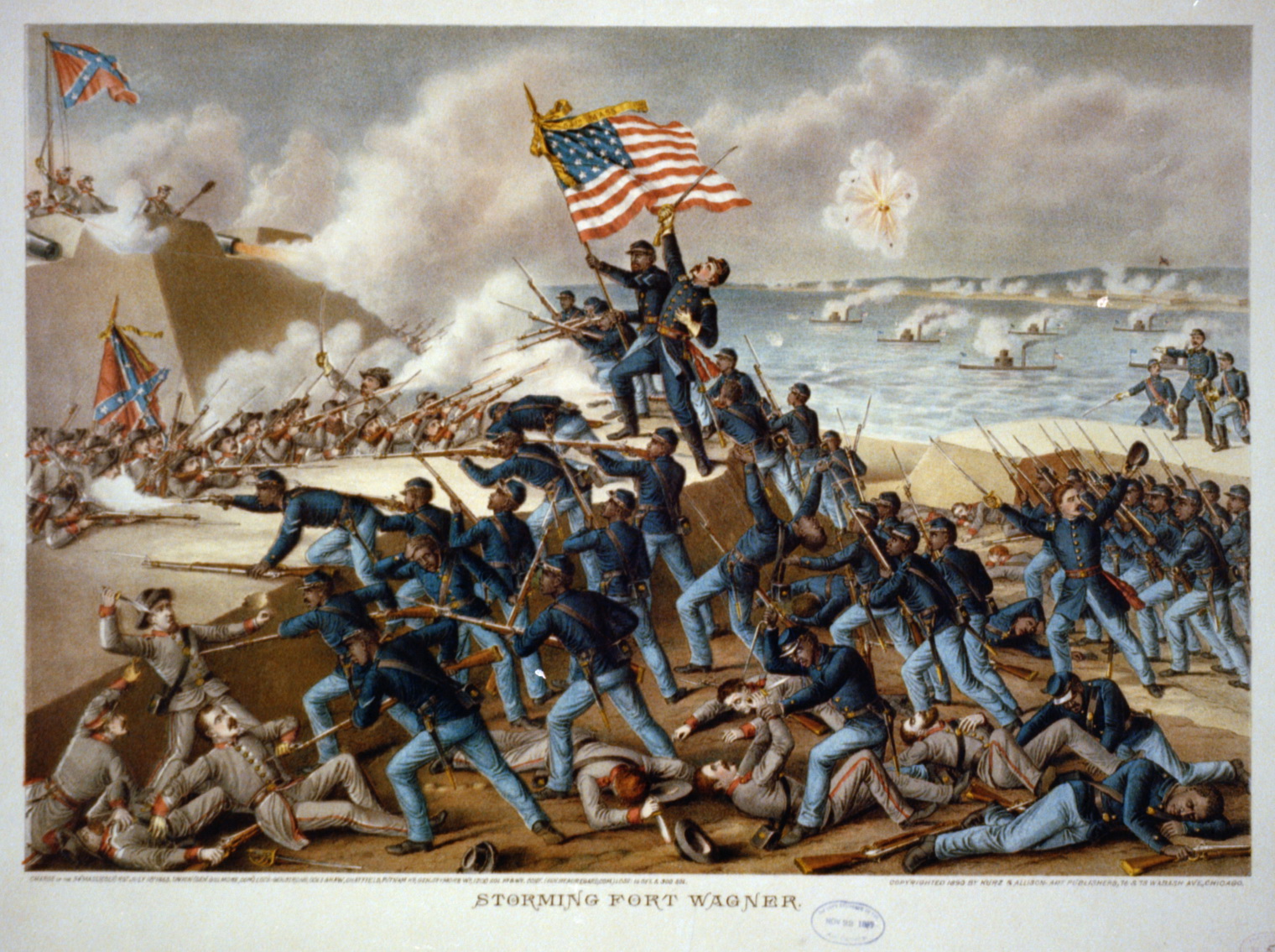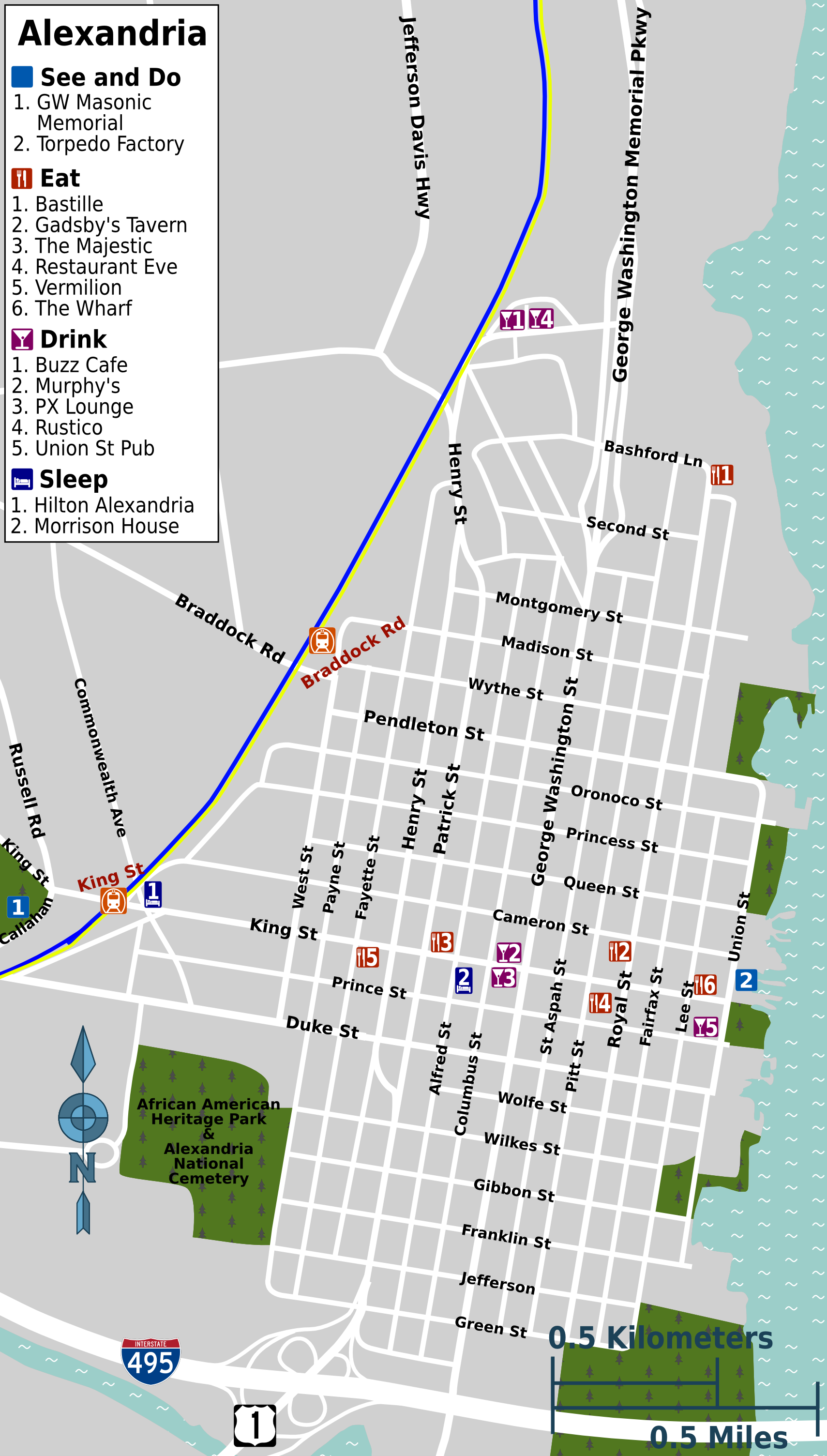|
Battery Rodgers
Battery Rodgers was a gun emplacement that composed a portion of the American Civil War defenses of the American capital city of Washington, D.C. Construction Built in 1863, Battery Rodgers was constructed with the ability to interdict sea traffic sailing up the Potomac River to Washington, D.C.. From its position on a high cliff overlooking Battery Cove, it was positioned with a clear view of fire and was ably suited to guarding the southern Potomac River and Accotink Road (Fort Hunt Road) approaches to Washington. The battery was named for George W. Rodgers, a captain in the Union Navy who was killed during an attack on Fort Wagner. It was long with sides of . During the war, the battery mounted one () Parrott rifle and one Rodman gun, one of the largest guns in the world at that time. The guns were supplied by two adjacent powder magazines, and the battery complex included a hospital, barracks, mess hall, and prison. It was garrisoned by 6 commissioned officers, 1 ordn ... [...More Info...] [...Related Items...] OR: [Wikipedia] [Google] [Baidu] |
Civil War Defenses Of Washington
The Civil War Defenses of Washington were a group of Union Army fortifications that protected the federal capital city, Washington, D.C., from invasion by the Confederate States Army during the American Civil War. Some of these fortifications are part of a grouping of properties now managed by the National Park Service (NPS) and listed on the National Register of Historic Places. Others are parts of state, county, or city parks or are located on privately owned properties. A trail connecting the sites is part of the Potomac Heritage Trail. Parts of the earthworks of some such fortifications still exist; others have been demolished. A 19.5-mile long trail connecting some of the forts was designated as a National Recreation Trail in 1971. History Civil War During the American Civil War, Union forces built in the Washington, D.C. area, included 68 major enclosed forts used to house soldiers and store artillery and other supplies. They also built 93 prepared but unarmed batteri ... [...More Info...] [...Related Items...] OR: [Wikipedia] [Google] [Baidu] |
Potomac River
The Potomac River () is in the Mid-Atlantic (United States), Mid-Atlantic region of the United States and flows from the Potomac Highlands in West Virginia to Chesapeake Bay in Maryland. It is long,U.S. Geological Survey. National Hydrography Dataset high-resolution flowline dataThe National Map. Retrieved August 15, 2011 with a Drainage basin, drainage area of , and is the fourth-largest river along the East Coast of the United States. More than 6 million people live within its drainage basin, watershed. The river forms part of the borders between Maryland and Washington, D.C., on the left descending bank, and West Virginia and Virginia on the right descending bank. Except for a small portion of its headwaters in West Virginia, the #North Branch Potomac River, North Branch Potomac River is considered part of Maryland to the low-water mark on the opposite bank. The South Branch Potomac River lies completely within the state of West Virginia except for its headwaters, which lie i ... [...More Info...] [...Related Items...] OR: [Wikipedia] [Google] [Baidu] |
George Washington Rodgers
Commander George Washington Rodgers II (October 30, 1822 – August 17, 1863) was an officer of the United States Navy. Biography Rodgers was born in Brooklyn, the son of Captain George Washington Rodgers (1787–1832) and Anna Maria Perry. His maternal grandfather was Christopher Raymond Perry and he came from a family with an extensive history in the Navy.Twentieth century biographical dictionary of notable Americans', vol. 9. Eds. Rossiter Johnson and John Howard Brown. 1904. Rodgers was warranted midshipman in the Navy on April 30, 1836, and was promoted to passed midshipman on July 1, 1842. He served in the West Indies, Africa, and Mediterranean. During the Mexican–American War (1846–1848), Rodgers served in the Gulf of Mexico as acting master on the steamer ''Colonel'' and frigate . Rodgers served with the United States Coast Survey from 1849 to 1850 and was promoted to lieutenant on June 4, 1850. Rodgers was assigned to duty on the sloop from 1851 to 1853. In 186 ... [...More Info...] [...Related Items...] OR: [Wikipedia] [Google] [Baidu] |
Fort Wagner
Fort Wagner or Battery Wagner was a beachhead fortification on Morris Island, South Carolina, that covered the southern approach to Charleston Harbor. Named for deceased Lt. Col. Thomas M. Wagner, it was the site of two American Civil War battles in the campaign known as Operations Against the Defenses of Charleston in 1863, in which United States forces took heavy casualties while trying to seize the fort. The Union Army's second assault on Fort Wagner, the Second Battle of Fort Wagner, included African American soldiers from the 54th Massachusetts Infantry Regiment and 3rd United States Colored Infantry Regiment. Josiah T. Walls, who went on to become a United States Congressman from Florida, was one of the soldiers. Construction Fort Wagner measured by , and spanned an area between the Atlantic on the east and an impassable swamp on the west. Its walls, composed of sand and earth, rose above the level beach and were supported by palmetto logs and sandbags. The fort's a ... [...More Info...] [...Related Items...] OR: [Wikipedia] [Google] [Baidu] |
Parrott Rifle
The Parrott rifle was a type of muzzle-loading rifled artillery weapon used extensively in the American Civil War. Parrott rifle The gun was invented by Captain Robert Parker Parrott, a West Point graduate. He was an American soldier and inventor of military ordnance. He resigned from the service in 1836 and became the superintendent of the West Point Foundry in Cold Spring, New York. He created the first Parrott rifle (and corresponding projectile) in 1860 and patented it in 1861.. Daniel Treadwell, who developed a method for making built-up guns in the early 1840s, tried to claim that his patent infringed on an earlier one, but in 1866 United States District Court court dismissed it, deciding that Treadwell's claim was invalidated by a 1843 British patent to John Frith. Parrotts were manufactured with a combination of cast and wrought iron. The cast iron made for an accurate gun, but was brittle enough to suffer fractures. Hence, a large wrought iron reinforcing band was o ... [...More Info...] [...Related Items...] OR: [Wikipedia] [Google] [Baidu] |
Rodman Gun
Drawing comparing Model 1844 8-inch columbiad and Model 1861 10-inch "Rodman" columbiad. The powder chamber on the older columbiad is highlighted by the red box. The Rodman gun is any of a series of American Civil War–era columbiads designed by Union artillery officer Thomas Jackson Rodman (1815–1871). The guns were designed to fire both shot and shell. These heavy guns were intended to be mounted in seacoast fortifications. 8-inch, 10-inch, 13-inch, 15-inch, and 20-inch bore () Rodman guns were produced. Other than size, the guns were all nearly identical in design, with a curving bottle shape, a large flat cascabels, and ratchets or sockets for the elevating mechanism. Rodman guns were true guns that did not have a howitzer-like powder chamber, as did many earlier columbiads. Rodman guns differed from all previous artillery because they were hollow cast, a new technology that Rodman developed that resulted in cast-iron guns that were much stronger than their predecesso ... [...More Info...] [...Related Items...] OR: [Wikipedia] [Google] [Baidu] |
Magazine (artillery)
A magazine is an item or place within which ammunition or other explosive material is stored. The word is taken originally from the Arabic word ''makhāzin'' (مخازن), meaning "storehouses", via Italian and Middle French. The term is also used for an ammunition dump, a place where large quantities of ammunition are stored for later distribution. This usage is less common. Field magazines In the early history of tube artillery drawn by horses (and later by mechanized vehicles), ammunition was carried in separate unarmored wagons or vehicles. These soft-skinned vehicles were extremely vulnerable to enemy fire and to explosions caused by a weapons malfunction. Therefore, as part of setting up an artillery battery, a designated place would be used to shelter the ready ammunition. In the case of batteries of towed artillery the temporary magazine would be placed, if possible, in a pit, or natural declivity, or surrounded by sandbags or earthworks. Circumstances might requ ... [...More Info...] [...Related Items...] OR: [Wikipedia] [Google] [Baidu] |
Alexandria, Virginia
Alexandria is an independent city (United States), independent city in Northern Virginia, United States. It lies on the western bank of the Potomac River approximately south of Washington, D.C., D.C. The city's population of 159,467 at the 2020 census made it the List of cities in Virginia, sixth-most populous city in Virginia and List of United States cities by population, 169th-most populous city in the U.S. Alexandria is a principal city of the Washington metropolitan area, which is part of the larger Washington–Baltimore combined statistical area. Like the rest of Northern Virginia and Central Maryland, present-day Alexandria has been influenced by its proximity to the U.S. capital. It is largely populated by professionals working in the United States federal civil service, federal civil service, in the United States Armed Forces, U.S. military, or for one of the many private companies which contract to Government contractor, provide services to the Federal government of ... [...More Info...] [...Related Items...] OR: [Wikipedia] [Google] [Baidu] |
Jones Point Light
The Jones Point Light is a small river lighthouse located on the Potomac River in Alexandria, Virginia. It was built in 1855. Lighthouse It is a small, one-story house with a lantern on top and served primarily as a warning light for naval ships approaching the Washington Navy Yard. The lighthouse was discontinued in 1926, replaced by a small steel skeletal tower located nearby; this smaller tower was in use for ten years before being discontinued. After being dark for more than half a century, Jones Point Light was relit by a private concern in 1995, however, it was eventually put out again after ownership switched from the Daughters of the American Revolution Foundation to the National Park Service. Certain local efforts have called for the structure to be relit, but as of 2017, the only working lighthouse on the Potomac River is the Fort Washington Point Lighthouse, located five miles downriver. The lighthouse is located on Jones Point in Alexandria, and is part of Jon ... [...More Info...] [...Related Items...] OR: [Wikipedia] [Google] [Baidu] |
Fort Foote
Fort Foote was an American Civil War-era wood and earthwork fort that was part of the wartime defenses of Washington, D.C., which helped defend the Potomac River approach to the city. It operated from 1863 to 1878, when the post was abandoned, and was used briefly during the First and Second World Wars. The remnants of the fort are located in Fort Foote Park, which is maintained by the National Park Service as part of the National Capital Parks-East system. The area's mailing address is Fort Washington, Maryland. Planning In the opening days of the American Civil War, the defenses of Washington D.C. were primarily concerned with an overland attack on the capital city of the United States. In 1861, the Arlington Line was constructed to help defend the city from attack via the direct, Virginia approach. Additional forts were constructed on the city's northern approaches to defend against any attacks from Maryland. At sea, however, only Fort Washington, a fort originally buil ... [...More Info...] [...Related Items...] OR: [Wikipedia] [Google] [Baidu] |






